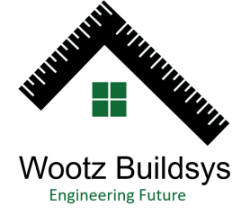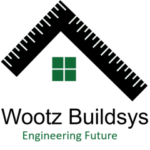If you’ve ever driven past a construction site and wondered how buildings seem to pop up more quickly and efficiently than before, there’s a good chance you’ve witnessed the rise of prefabricated structures in India. These innovative building solutions are changing the way we construct homes, schools, offices, and even large industrial complexes across the country. But why are prefabricated structures becoming so popular? Let’s break it down in a way that makes sense for everyday Indians—whether you’re a homeowner, a builder, or simply curious about modern construction.
What Are Prefabricated Structures?
Prefabricated structures, often referred to as “prefab” buildings, are buildings or parts of buildings manufactured off-site in a factory. After production, these components are transported to the construction location, where they are assembled like big building blocks to form a complete structure.
Types of Prefabricated Structures
- Modular Buildings: Entire rooms or units built in the factory and joined on site.
- Panelized Structures: Large panels (like walls or floors) made off-site and assembled at the location.
- Pre-engineered Buildings (PEBs): Steel structures often used for warehouses, factories, or large halls.
- Portable Cabins: Small structures easily transported and relocated as needed.
Why Are Prefabricated Structures Gaining Traction in India?
India’s rapid urbanization and growing infrastructure demands have put immense pressure on the traditional construction sector. Here’s why prefabricated structures are becoming a preferred option for today’s builders and homeowners:
1. Speedy Construction
In a country like India, where project delays can mean huge losses, faster construction is a game-changer. With prefabricated structures, components are built parallelly in the factory while site work happens simultaneously. This means project timelines can be reduced drastically—sometimes by as much as 30-50%, making it possible to complete housing, schools, and offices much sooner than with conventional methods.
2. Cost-Effective
Prefab construction may seem expensive at a glance due to upfront fabrication costs. But it actually saves money in the long run:
- Reduced labour costs (fewer on-site workers needed).
- Less material wastage (controlled factory environment).
- Limited site overheads (shorter construction period).
- Lower chances of cost overruns due to predictable timelines and processes.
3. Consistent Quality
In a traditional build, quality can vary due to differing workmanship, weather, and material problems. Prefabricated structures are manufactured in quality-controlled environments, where every component is made to strict standards. This consistency results in strong, durable, and reliable buildings suited to a variety of Indian climates.
4. Eco-Friendly and Sustainable
With India focusing more on sustainability, prefab structures tick many boxes:
- Minimized material waste (leftovers are reused or recycled back at the factory).
- Reduced pollution and noise at the construction site.
- Less need for water and sand—critical resources that are becoming scarce in Indian cities.
- Many prefab materials, like steel and engineered wood, are recyclable.
5. Flexibility of Design
Forget the old notions of “boxy” prefabricated buildings. Modern prefab lets you achieve almost any look or function, from chic urban homes to state-of-the-art hospitals. Components like walls, floors, and roofs can be tailored to meet aesthetic preferences and functional needs, giving architects and homeowners more freedom.
6. Safety on Site
Construction sites can be risky, especially during monsoons or extreme heat—both very real concerns across India’s diverse climate zones. By shifting much of the work to factories, prefab reduces on-site accidents, makes construction safer for workers, and avoids weather-related delays.
Real-World Use Cases of Prefabricated Structures in India
Indian builders and institutions are embracing prefab for more than just homes:
- Government Projects: Many schools, toilets (under Swachh Bharat), and even railway station structures are built using prefab for speed and scalability.
- Private Homes: Young families in urban centers are opting for prefab villas that can be ready in mere months.
- Corporate/Commercial Buildings: Warehouses, factories, and office spaces can be customized and erected in record time.
- Healthcare: Hospitals and clinics in underserved rural or remote locations can be set up rapidly using pre-engineered structures.
Challenges and Myths About Prefabricated Structures in India
Despite many benefits, certain concerns still persist:
- Myth: Prefabricated structures are “temporary” or “weak.”
Reality: With advancements in engineering, these buildings can meet or exceed the strength of conventional builds, lasting for decades. - Challenge: Lack of Awareness
Many Indian homeowners are not familiar with prefab options, though this is quickly changing as success stories spread. - Challenge: Transportation Logistics
Moving large panels or modules from factories to remote sites can be tough due to road and traffic conditions, but manufacturers are improving solutions.
Prefabricated Structures vs. Conventional Buildings
Future of Prefabricated Structures in India
Factors like government initiatives (like Pradhan Mantri Awas Yojana), Smart City projects, and corporate sustainability drives are powering the prefab revolution. With urban spaces at a premium and construction deadlines tighter than ever, the demand for “build fast, build smart” solutions will only increase.
Builders, architects, and even regular citizens are becoming more receptive to modular homes, eco-hospitals, and even prefab schools that can serve a village in days. As the industry grows, expect high-quality, affordable, and beautiful prefab structures to become the new normal in Indian cities and rural areas alike.
Frequently Asked Questions (FAQs)
1. Are prefabricated structures suitable for Indian weather conditions?
Absolutely. Prefabricated structures can be designed to withstand extreme heat, heavy rainfall, and seismic activity. Many are specifically engineered for India’s varied climates.
2. Is prefab construction costlier than brick-and-mortar buildings?
While the initial factory production costs may seem higher, you save on time, labor, and material wastage, making prefab structures often more cost-effective in the long run—especially when project delays are factored in.
3. Can I customize my prefabricated home or office?
Yes. Modern prefab allows a high degree of customization, including size, layout, finishes, and energy-efficient features, tailored to your needs.
4. How long does it take to build a prefabricated house in India?
Most prefab homes or offices can be built and installed in as little as 3-6 months, compared to over a year for traditional construction.
5. Are prefabricated buildings weaker than conventional structures?
Not at all. Prefabricated structures are designed to national and international standards. When built and maintained properly, they can be just as strong or even stronger than traditionally constructed buildings.
Conclusion
For anyone looking to build quickly, efficiently, and sustainably in India, prefabricated structures offer a practical solution. They blend affordability, speed, safety, and design flexibility, all while supporting the nation’s push for smarter, eco-friendly urban development. Whether you’re an aspiring homeowner, a business owner, or a government official, it’s time to embrace prefab as the future of construction in India.
cerutu4d cerutu4d cerutu4d jacktoto toto slot rtp slot jacktoto situs toto rtp live situs judi bola jacktoto sangkarbet cerutu4d cerutu4d cerutu4d jacktoto cerutu4d cerutu4d sangkarbet jacktoto panached rtp slot rtp slot situs slot situs slot rtp slot rtp slot jacktoto jacktoto jacktoto link slot link slot link slot situs toto situs toto situs toto jacktoto jacktoto jacktoto jacktoto jacktoto jacktoto jacktoto jacktoto jacktoto palembangpafi jacktoto jacktoto login cerutu4d cerutu4d prediksi hk situs slot toto slot pam4d kampungbet toto togel toto slot cerutu4d jacktoto bandungpafi toto slot link slot resmi situs togel judi bola cerutu4d cerutu4d toto togel cerutu4d jacktoto cerutu4d cabe4d cerutu4d cerutu4d cerutu4d sangkarbet cerutu4d cerutu4d cerutu4d cerutu4d sangkarbet pam4d cerutu4d cerutu4d cerutu4d link slot cerutu4d cerutu4d cerutu4d cerutu4d cerutu4d cerutu4d cerutu4d link slot cerutu4d cerutu4d cerutu4d cerutu4d situs slot pam4d pam4d slot gacor rtp slot toto togel toto slot pam4d pam4d situs togel jacktoto togel online situs toto jacktoto situs toto jacktoto situs toto situs toto jacktoto situs toto slot gacor jacktoto slot online grenetwork.org cerutu4d


